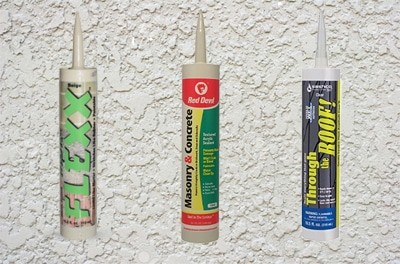
Best Crack Repair Products
Several masonry patching products, such as hydraulic cement, do an adequate job of filling cracks in concrete walls. However, these concrete crack repair products can fail after a few years if your foundation or retaining wall continues to move slightly, leaving you with little choice but.
Featured Product: PREPARATION • Clear out chipped, loose or unstable concrete from the repair area. This may require a hammer and chisel to break away the pieces.
• It may be necessary to widen the crack in some places. Once the area has been prepared, sweep away all loose concrete debris. • To ensure the area is adequately prepared for the repair, use a pressure washer or water hose to clean the area of dirt and surface build up.
This step will contribute to obtaining a good bond between the existing concrete and the repair material. APPLICATION • Follow the mixing instructions and mix the dry powder to the water requirements to ensure the material mixes properly. • Using a margin trowel, thoroughly mix the material to a trowelable consistency and until all lumps have disappeared. • Using the margin trowel, place the material in the crack. • In thin sections, it may be necessary to turn the trowel sideways to work the material into the voids until filled.
• Continue this process filling the crack and repair area. FINISHING • It may become necessary to use a finishing trowel and apply pressure to fill some of the voids.
• This step will aid in pushing the material into the voids and will also smooth the surface of the repair area. • Use the finishing trowel to put a neat edge on the side of the repair and remove any excess material from joint areas. • Use a brush to smooth and blend the patch material into the existing concrete surface. • A successful crack repair using Sakrete Fast Setting Cement Patcher. Tip: When using Fast Setting Cement Patcher at 1/4 inch, must be used.
For complete product information, please refer to the. Calculated results will reflect how many bags are needed for Block and Brick.
Enter the number of bricks (8' x 2' x 4') or blocks (8' x 8' x16') in the box below that you plan to use for your project. The calculator will then tell you the number of bags you need based on the different size of bags we carry. Download mini militia cheat. This calculator is based on a 3/8' mortar joint. All yields are approximate and do not include an allowance for waste, uneven subgrade or any other variations from the joint size and brick and block sizes noted above.
InspectAPedia tolerates no conflicts of interest. We have no relationship with advertisers, products, or services discussed at this website. How to seal cracks in concrete floors, foundations, walls, or other masonry: this article how to seal and repair of cracks in poured concrete slabs, floors, or walls. We list all of the current methods used to seal control joints or cracks that occur in those building surfaces, giving the properties, general procedure, and pros and cons of each method: control joint inserts, masonry caulks, radon crack sealants, semi rigid epoxy resin crack fillers, special poly urea caulks designed as a joint filler - polyurethane foam injection to seal cracks, grouts including portland cement, latex-modified, epoxy, modified epoxy-supported, and furan grouts or other products used to fill or seal cracks in concrete or other masonry surfaces & structures.
We also provide a to this topic, or you can try the page top or bottom as a quick way to find information you need. How to seal control joint & expansion joint cracks in concrete slabs Here we discuss how to choose among and apply the alternative methods for repairing or sealing cracks in masonry surfaces such as poured concrete floor slabs, concrete foundation walls, or brick or masonry block foundation walls. We describe use of epoxy sealants, polyurethane foam sealants, and hydraulic cement crack repair sealants. This article series describes how to recognize and diagnose various types of foundation failure or damage, such as foundation cracks, masonry foundation crack patterns, and moving, leaning, bulging, or bowing building foundation walls. Types of foundation cracks, crack patterns, differences in the meaning of cracks in different foundation materials, site conditions, building history, and other evidence of building movement and damage are described to assist in recognizing foundation defects and to help the inspector separate cosmetic or low-risk conditions from those likely to be important and potentially costly to repair.